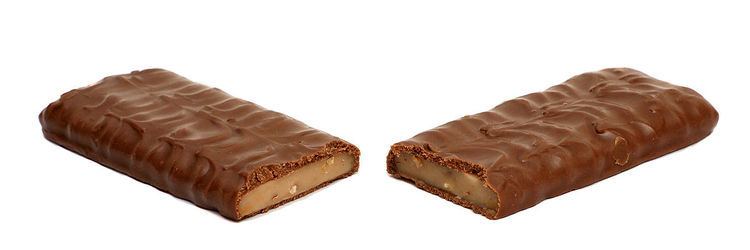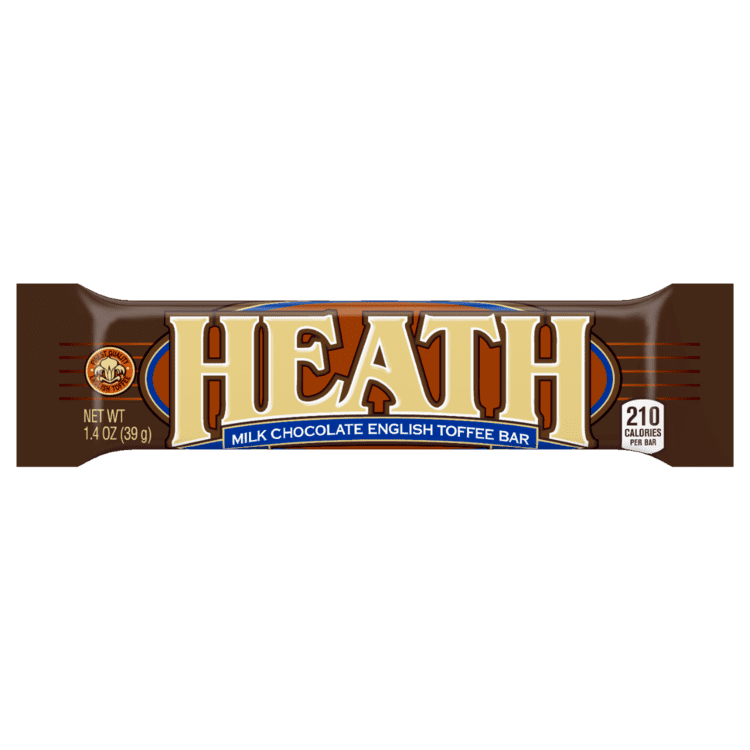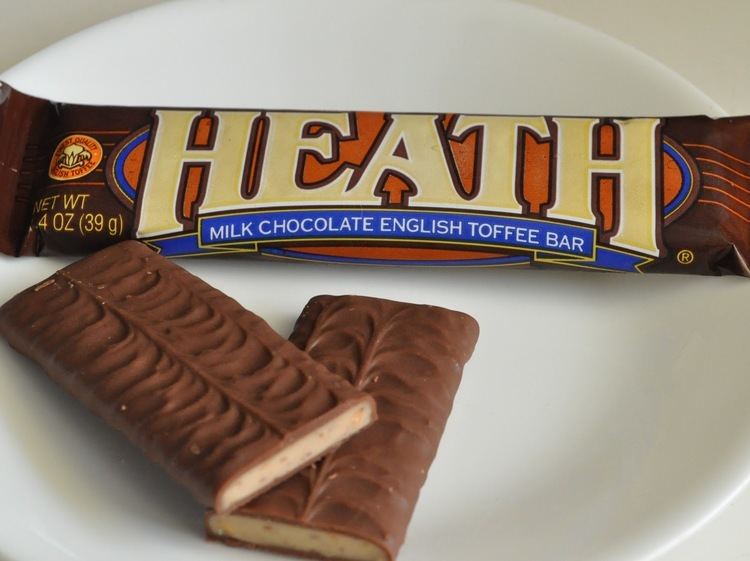Country U.S. Markets U.S. Introduced 1914 | Related brands Previous owners L.S. HeathLeaf, Inc. | |
 | ||
Similar Toffee, Peanut butter cup, Chocolate chip cookie dough ice, Butter Brickle, Butter pecan | ||
Heath bar candy
The Heath bar is a candy bar made of toffee and milk chocolate, marketed by L.S. Heath beginning in 1914, subsequently by Leaf, Inc., and since 1996 by Hershey.
Contents
- Heath bar candy
- Homemade toffee candy skor bar heath bar
- History
- Heath bars in other products
- References

Shaped as a thin hard slab with a milk chocolate coating, the toffee originally contained sugar, butter, and almonds, and was a small squarish bar weighing 1 ounce. It is similar to Hershey's Skor bar and Mondelēz's Daim bar. The Heath bar ranked 56th nationally in the US and 110th on the US East Coast in a 1987 popularity survey, and has become a popular add-in ingredient to ice cream, cookies and other confections.

Homemade toffee candy skor bar heath bar
History

In 1913, L.S. Heath, a school teacher, bought an existing confectionery shop in Robinson, Illinois as a likely business opportunity for his oldest sons, Bayard Heath and Everett Heath. The brothers opened a combination candy store, ice cream parlor, and manufacturing operation there in 1914.

With the success of the business, the elder Heath became interested in ice cream, and opened a small dairy factory in 1915. His sons worked on expanding their confectionery business. At some point they reportedly acquired a toffee recipe, via a traveling salesman, from a Greek confectioner in another part of the state. In 1928, they began marketing it locally as "Heath English Toffee", proclaiming it "America's Finest".
In 1931, when Bayard and Everett were persuaded by their father to sell the confectionery and work at his dairy, they brought their candy-making equipment with them, and established a retail business there. The Heaths came up with the marketing idea of including their toffee on the order form taken around by the Heath dairy trucks, so that one could order Heath bars to be delivered along with one's milk and cottage cheese.
Early ads promoted Heath as a virtual health bar – only the best milk chocolate and almonds, creamery butter, and "pure sugar cane." The motto at the bottom of one ad read "Heath for better health!" It was surrounded by illustrations of milk, cream, butter, cheese, and ice cream, and off in a special corner – a Heath bar and a bottle of soda. The latter was probably Pepsi, as the Heath Co. bottled the drink for a number of years.
The Heath bar started to grow in popularity nationally during the Depression, despite its one-ounce size and the five-cent price, equal to larger bars. Made by hand until 1942, the candy was produced on a major commercial scale for good after the U.S. Army placed its first order of $175,000 worth of the bars. The Heath bar had been found to have a very long shelf life, and the Army subsequently included it in soldiers' rations throughout World War II.
Popularity of the Heath bar grew after the war, although the manufacturing process remained largely a hands-on, family-run operation. All four of L.S. Heath's sons, his two daughters, and several grandchildren were involved in the business. In the 1950s, the Heath Toffee Ice Cream Bar was developed, and eventually franchised to other dairies.
In the 1960s, the huge national success of the Heath bar led to family in-fighting, with at least one grandchild, Richard J. Heath, expelled from the business in 1969, eventually publishing a book in 1995 entitled Bittersweet: The Story of the Heath Candy Co..
In the 1970s, the company bought the South Dakota company "Fenn Brothers", which had produced a clone of Heath toffee – Butter Brickle.
In 1989, with the diminishing and splintering of the Heath family, the business was sold to a Finnish company, Leaf, Inc., which in turn was acquired by Hershey in 1996. Hershey had initially created the Skor bar to compete with the Heath bar, before it bought out Leaf, Inc.
Since acquiring the product, Hershey has elongated the bar to align with its competition, and it now weighs 1.4 ounces. Current ingredients are milk chocolate, sugar, palm oil, dairy butter (milk), almonds, salt, artificial flavor, and soy lecithin. The wrapper's vintage brown color scheme has a small seal proclaiming Heath the "Finest Quality English Toffee."
Heath bars in other products
Following the 1973 incorporation by Steve's Ice Cream of the candy bar as an ice-cream "mix-in," Heath bars became a significant ingredient in ice cream and other confections.
Historically, variations of the bar have — according to Ray Broekel, in his 1982 book The Great American Candy Bar Book — included Heath Milk Chocolate with Peanuts, Heath Milk Chocolate Toffee Crunch, Heath Milk Chocolate with Natural Cereal and Raisins, and the double Heath bar. In the 1980s, a Heath Toffee Ice Cream Sandwich appeared, along with Heath Soft ‘n Crunchy — a soft serve ice cream.
Currently, other varieties of Heath bar-based confections include Archway Cookies Heath Cookie, Heath Bar Klondike bars, Baskin-Robbins Heath Bar Shake and the Dairy Queen Heath Bar Blizzard Treat — as well as Heath Bar flavored varieties of ice cream with a coffee or vanilla ice-cream base, such as the ice cream formerly known as Ben and Jerry's Heath Bar Crunch, renamed Vanilla Toffee Bar Crunch in 2014 when the company stopped using Heath Bars.
Though the candy bar's manufacturer, L.S. Heath, and subsequently Hershey, have supported the incorporation of the candy bar in other confections by marketing a pre-shredded variety, many vendors hand crumble the candy bars, finding the pre-crumbled variety "too small and too dusty."
